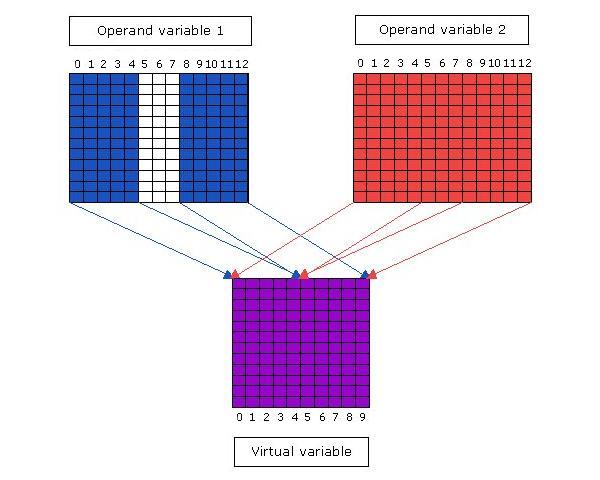Using multiple operands
When an operator requires two or more operands, only pings that have compatible ping geometry in both operands will be used to create the resultant virtual variable (with the exception of Match Pings and Match Ping Times, discussed below).
In the diagram below Operands 1 and 2 have the same number of pings (13) but pings 5, 6 and 7 are missing from Operand 1. As a result, pings 5, 6 and 7 are not used and the virtual variable has only 10 pings. Pings 5-9 in the virtual variable are based on pings 8-12 from the operand variables.

Notes:
-
Ping geometry may be affected by some calibration settings. For example, the sound speed setting may affect sample ranges for some data types. Ensure you have correctly entered calibration settings for all operand variables.
-
Operand variables can have a different number of pings, but only pings with compatible ping geometry will be used to create the virtual variable.
-
In the event that no pings have compatible ping geometry, the virtual variable will appear blank (the no data color) when viewed as an echogram.
-
There are a number of Data manipulation operators that can be used to align ping geometry between variables. For example:
- if the ping times vary by small amounts between variables, the Match ping times operator can be used to adjust the ping times for one or both operands.
- if the start range, stop range, sample thickness or number of samples varies between variables, the Match geometry operator enables you to resample one variable to the exact ping geometry of another variable. If Match ping times is also required, it should be used prior to Match Geometry.
- if the operand variables have different start ranges, stop ranges, or number of data points per ping, one of the resample operators can be used on each operand variable to create matching ping sets.
See also
About virtual variables
Creating and deleting virtual variables
Operators